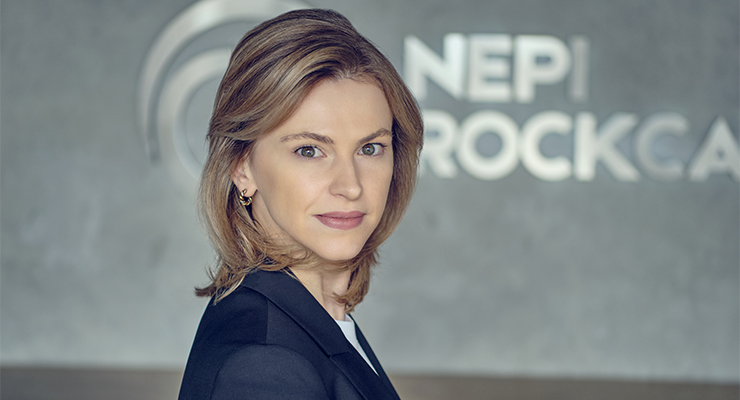ACROSS: YOU JUST HAD YOUR ANNUAL RETAILERS DAY. WHAT WAS THE MOST RELEVANT MESSAGE YOU TOOK HOME FROM THAT DAY?
JUSTYNA BARTOSZ: The message was very clear – the growing importance of experience and community building. All of our guests and speakers emphasized those trends, which we try to support as much as we can. Today, there is a growing group of consumers who prefer to spend more on experiences than on products. People want to come together to participate in joyful things and activities – to have fun together – especially since the pandemic.
ACROSS: LET US TAKE A STEP BACK: NEPI ROCKCASTLE IS MAINLY ACTIVE IN CEE AND JUST PUBLISHED IMPRESSIVE RESULTS. WHAT IS MOST NOTABLE ABOUT YOUR MARKETS?
BARTOSZ: Looking at the macroeconomics, in recent months, our region has grown faster than Western European countries. Economists’ forecasts also project that the region’s GDP growth will be double the European Union’s average over the next few years as the population’s disposable income is rising. Operating costs in CEE are still below those in Western Europe, and retailers usually have higher sales margins. At the same time, the supply of retail space is also relatively low. That underpins our growth potential and shows why the region represents an attractive opportunity for retailers and real estate owners and developers. Those factors, among others, led to our tenants’ like-for-like sales increasing by 8.7% against the same period in 2023, and the average basket size increasing by 8.2%.
Our strategic development pipeline is expanding – with a projected EUR 817 million expenditure by 2028 – because we are still finding many locations at which we can extend or build our properties to meet the demand for space. Major projects in the pipeline include a 55,400-square meter GLA extension currently under construction at Promenada Bucharest, Romania and a 60,500-square-meter GLA greenfield development – where we are expecting permitting later this year – in Plovdiv, Bulgaria’s second-largest city. Smaller projects include the expansion of Shopping City Ploiesti, Romania and Pogoria Mall in Dąbrowa Górnicza, Poland. Major refurbishment works continue at Bonarka City Center, Poland and Arena Mall Budapest, Hungary. We are planning two new residential developments in Romania on plots of land next to our retail assets. We are expanding our photovoltaic project to countries outside Romania, where we have already completed the installation of solar panels across 27 properties. We are also planning greenfield photovoltaic projects at several new locations in Romania to expand our green energy generating capacity and to meet the electricity consumption needs of our tenants.
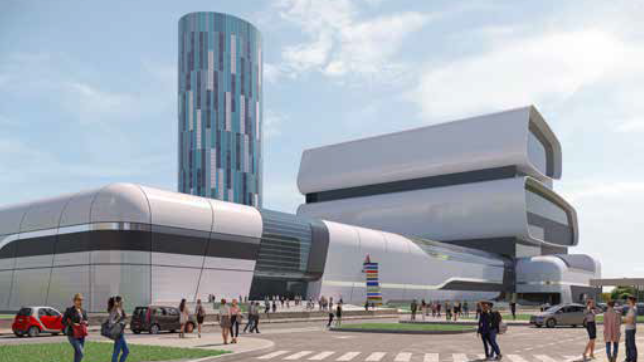
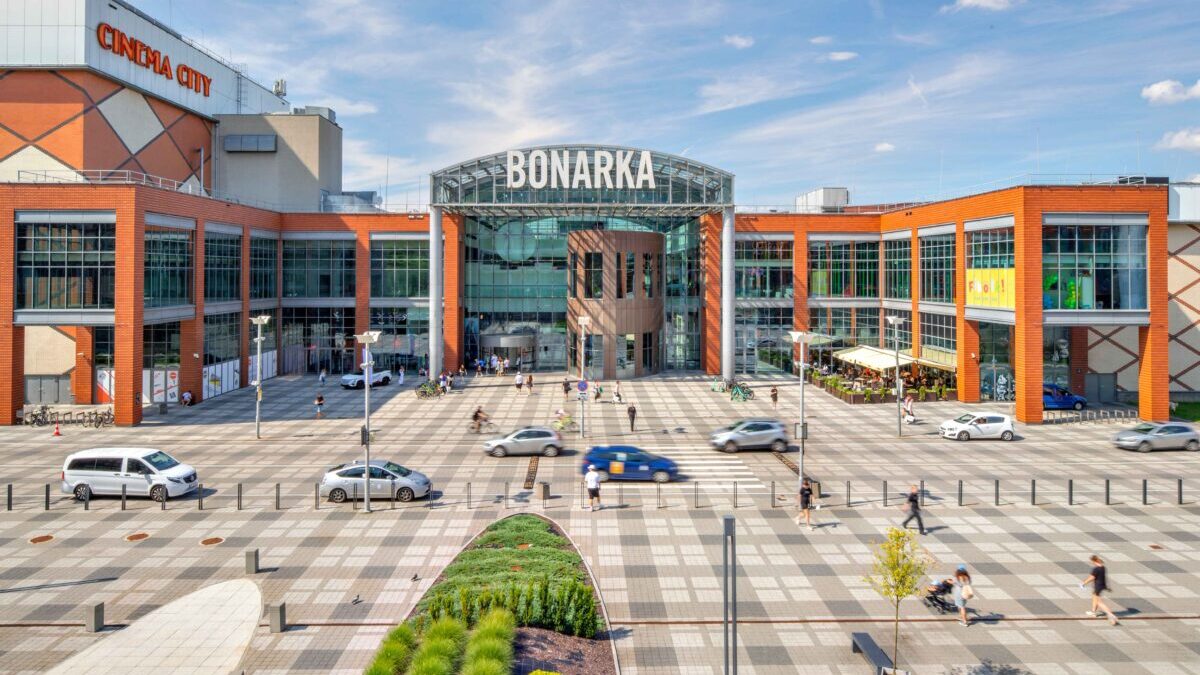
NEPI Rockcastle’s development pipeline of EUR 817 million in expenditure by 2028 includes, among others, the expansion at Promenada Bucharest, Romania, and major refurbishment works at Bonarka Krakow, Poland.
ACROSS: WHAT IS DIFFERENT REGARDING CONSUMER HABITS AND DEMANDS?
BARTOSZ: Consumer habits and demand are a function of the aforementioned macroeconomic conditions and are also overlaid by history. In CEE markets, the history of capitalism and modern retail is not as long as in Western European countries, and some internationally known brands are not yet present there. The demand for these brands is therefore very high and customers welcome their arrival with great enthusiasm. This is particularly true in Southeast Europe, where relatively low retail intensity is accompanied by higher growth in disposable income than in other CEE countries.
In our portfolio, international brands accounted for 73% of new leases signed in the first half of this year. In addition, data from 2023 shows that the combined GDP of CEE countries accounts for only 10% of the European Union economy, despite accounting for 22% of the population, so there is still significant growth potential in this region.
ACROSS: WHAT PRODUCT CATEGORIES ARE IN PARTICULAR DEMAND?
BARTOSZ: There are some differences between countries, but overall sales have improved in all categories compared to the previous year. Fashion remains solid, and sales in the food and beverage sector are increasing, but the segments where we see the strongest growth in demand are health and beauty and medical and wellness services. Brands that focus on well-being are very successful and are experiencing double-digit growth rates in that sector.
ACROSS: DO CONSUMERS TEND TO ASK FOR INTERNATIONAL BRANDS OR SMALLER BRANDS?
BARTOSZ: I would say it’s a mixture of both. Customers at our shopping centers ask for international, big brands like Nike or Zara. The first Primark store in Hungary, which opened at our Arena Mall in Budapest, was received with incredible enthusiasm. It brought a substantial increase in footfall, not only in the first few days after opening, but afterwards as well, which also had a positive impact on the sales of other tenants.
It proves that there are opportunities for high-end retail brands in Hungary and across the region that have not been taken advantage of yet. The health and beauty sector is remarkable in this respect. Even though we have many local and smaller stores, including concepts that focus on niche brands, one of the biggest success stories for us is the international beauty chain Rituals, which connects people with the idea of well-being and building a community. Brands that position themselves in this way attract an ever-growing audience, and international brands often have more power to do so.
ACROSS: YOU HAVE ALREADY MENTIONED THE GROWING IMPORTANCE OF EXPERIENCE. HOW DO YOU FIND ANSWERS TO THAT NEED?
BARTOSZ: We do it on several levels simultaneously. First and foremost, we constantly invest in the modernization and renovation of our centers, which includes a strong focus on sustainability. Second, we pay a lot of attention to the tenant mix at the centers, especially when selecting concepts, to make sure that we have a diverse and unique offering that evolves in line with the trends in society. Third, when it comes to gastronomy, we constantly improve our offer and deliver the most up-to-date food concepts, many of which are also about well-being, healthy eating, and spending time with loved ones. New restaurants or food hall-style spaces are designed to be very open, offering bigger spaces so people can mingle and spend time together. We are seeing more demand for restaurants offering waiter service because customers are willing to spend more money and time at such places. Finally, we focus on and analyze the needs of Generation Z, since that youthful age cohort is increasingly present at our centers and represents the largest future group of consumers.
ACROSS: WHAT ABOUT ENTERTAINMENT?
BARTOSZ: Regarding entertainment: The cinema industry was struggling but is now picking up. We see a positive trend here, with refurbishments and upgrades often driving double-digit growth in sales. Cinemas are a great example of making a difference when offering customers state-of-the-art quality. Today, operators offer reclining seats, more attractive F&B and super innovative cinema halls. That is due to the need for cinema chains to differentiate their experience from the standard online streaming services that people have at home. Customers are willing to pay more for a better quality of service.
Apart from cinemas, we are opening increasingly diverse new entertainment concepts. There are playrooms in which customers can have their children looked after, but which also include a range of activities that parents can also enjoy together with their children. Climbing walls, indoor carting, escape rooms, spaces for social media influencers, immersive art spaces, even a butterfly house – you name it.
Right now, we are working on some cool new concepts at several of our locations, which I cannot talk about yet, where we are cooperating closely with our partners on the design from the very beginning. It’s all about creating places where people enjoy memorable moments together – this is the underlying principle behind all changes and innovations. Events are also a crucial and increasingly creative area. We host numerous and diverse events across all of our centers, often produced in collaboration with our retailers and supported by well-known FMCG brands. These can be one-off or cyclical and include e-gaming competitions, music concerts, community sports activities, lectures, art exhibitions, and educational, environmental, and social activities, to name a few. We just held an eSports Kings Tournament at our centers in Romania and had a skimboarding championship in Platan mall in Zabrze, Poland. Those are genuine visitor magnets.
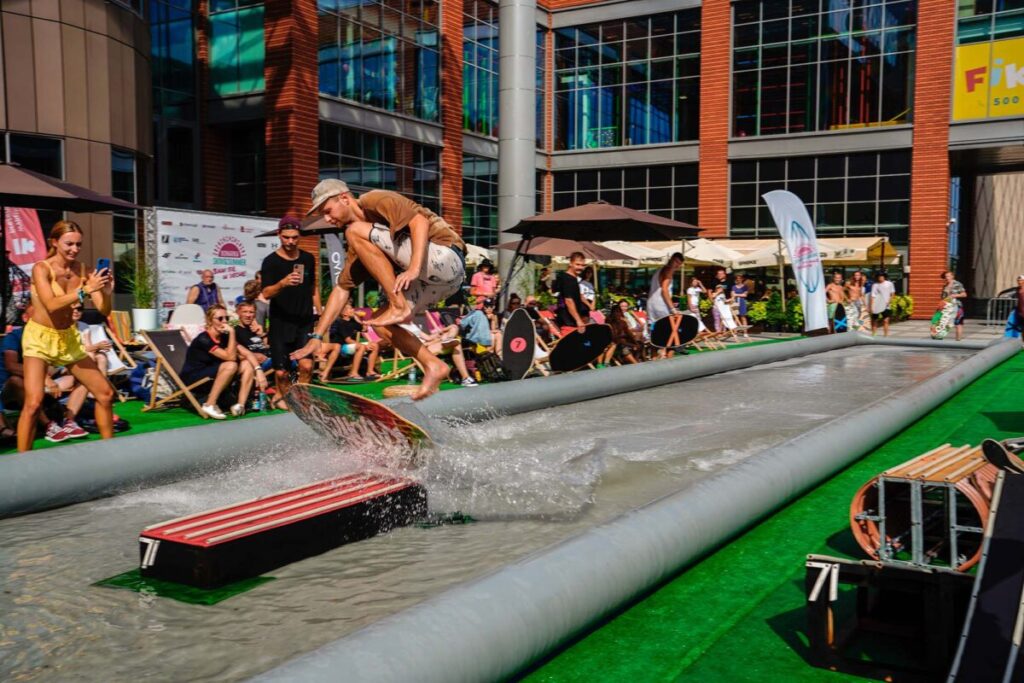
championship at Platan mall in Zabrze, Poland. /// credit: NEPI Rockcastle
ACROSS: CAN YOU GIVE US AN EXAMPLE OF A NEW FORMAT?
BARTOSZ: Let’s talk about ISPACE at Mega Mall, Bucharest. This is a new media art space that uses technology to deliver immersive experiences in a 500-square-meter store that features installations inspired by art and nature. The unit is divided into areas in which adults and children are taken on different “journeys”, where they can experience the depths of the ocean or outer space or even learn about the history or art from paint to pixels, using 360 video projections and spatial sound.
In Poland, another great example is a company called Fikołki. Apart from an already well-known and popular kid’s play concept, the company has recently developed a new concept aimed at young adults. In order to meet the needs of young people and understand their definition of fun, the owner looked for inspiration in the UK and other European countries, combined all the knowledge gained, and adapted it to the Polish market. The result is a concept that promises fun, movement, and educational elements.
The Lithuanian company Adventica also belongs to this category. It has proposed a unique family entertainment concept centred around ecocarting and racing for one of our spaces. Entertainment is much more differentiated nowadays, and if there is an underlying principle that links this segment together, it is well-being in its broadest sense. A lot of concepts are about movement, sport, education, and relaxation.
ACROSS: WHAT CONSEQUENCES DOES THIS HAVE FOR THE LEASING PROCESS?
BARTOSZ: Such new concepts also require different spaces. Leasing is changing. For instance, for these types of concepts, we must be much more flexible and creative than, for example, for fashion tenants in terms of size and layout.
ACROSS: HOW DO YOU DEAL WITH THE OTHER KIND OF EXPERIENCE – THE EXPERIENCE ON THE SHOP FLOOR?
BARTOSZ: The golden rule is to keep people interested – especially with Gen Z increasingly present in our shopping spaces. To encourage them to come to the stores, the offer must be attractive, entertaining, and it must create connections with the brand. Retailers need to offer something special, such as access to a specific product or event for select groups only. Our tenants know that they must deliver something fresh and new to keep customers interested, which has resulted in many store renovations and refurbishments. Again, it is about creating a sense of uniqueness and community building. Another word that cropped up a lot during our Retailers Day was authenticity. Brands need to be honest and show their values. Nowadays, it is easy for customers to verify whether a brand is authentic, but sharing the same values is the best connection brands and consumers can have.
ACROSS: WHAT DOES AUTHENTICITY LOOK LIKE?
BARTOSZ: During our event, it was stated: “Be yourself. Everyone else is already taken.” Authentic brands are successful, but everyone has their own recipe for success, and they connect differently with their consumers. Some hire DJs and create music events; others do workshops. It differs from brand to brand. However, the first step is always for every brand to analyze what it stands for and how it wants to communicate this.
A great example of an authentic brand in our portfolio is Cărturești, a Romanian bookstore chain. Their story started 24 years ago when they opened a tiny, 40-square-meter bookshop in downtown Bucharest. Today, the success of their concept can be found in the 55 stores across the country and their online presence. To visit one of their stores is an immersive experience. Cărturești engages its customers by extending its offer to include book launches and exhibitions featuring renowned artists and tea in addition to its extensive collection of books, music, and art films.
At our Retailers Day, they talked about how their customers usually spend 40 to 60 minutes browsing books and finding comfortable places to sit and read. Kids and teenagers even love to sit on the floor, which is why they create spaces that feel like living rooms – with wooden or carpeted floors where they can make themselves comfortable, thus making the visit more akin to a ritual than a transaction.
ACROSS: DO TRADITIONAL METRICS, SUCH AS SALES PER SQUARE METER, STILL WORK IN A RETAIL WORLD WHERE AUTHENTICITY, COMMUNITY BUILDING, AND EXPERIENCE ARE MORE CRUCIAL FOR SUCCESS THAN PRODUCTS?
BARTOSZ: Sales per square meter is the basic parameter and remains relevant, even though retailers are using floor space traditionally reserved for products to deliver events or special activities and services. In an omnichannel world, things are changing constantly. Tenants who previously concentrated more on online sales are increasingly talking to us about looking for larger physical spaces to make products available on shop shelves. Brick-and-mortar stores increase their presence and test new markets through online stores. Consumers are better informed today; they check physical and online offers simultaneously and know about prices, competitors, etc. That means retailers must be present online as well as offline. One cannot do without the other.
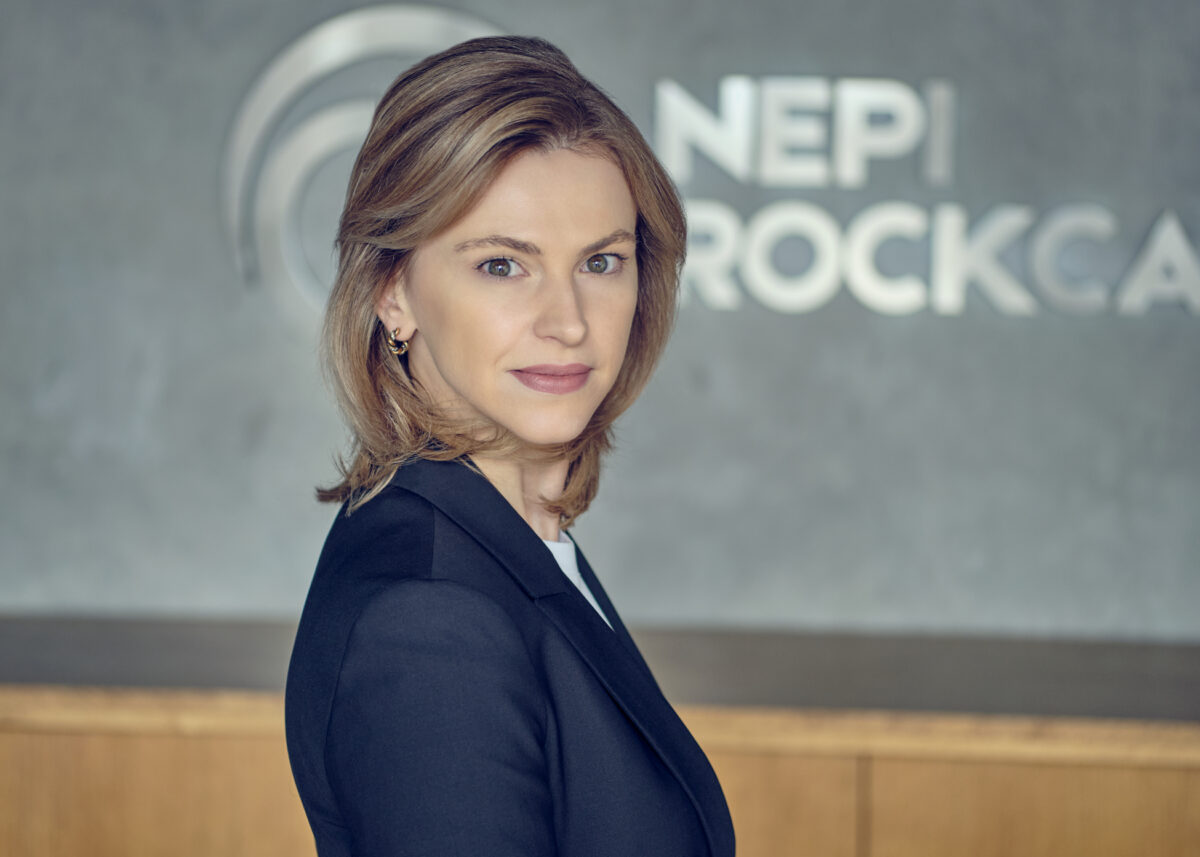
Justyna Bartosz
Justyna Bartosz is Head of Leasing at NEPI Rockcastle.
